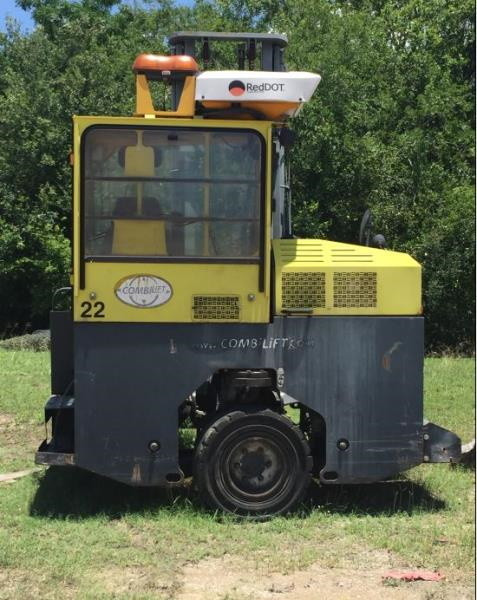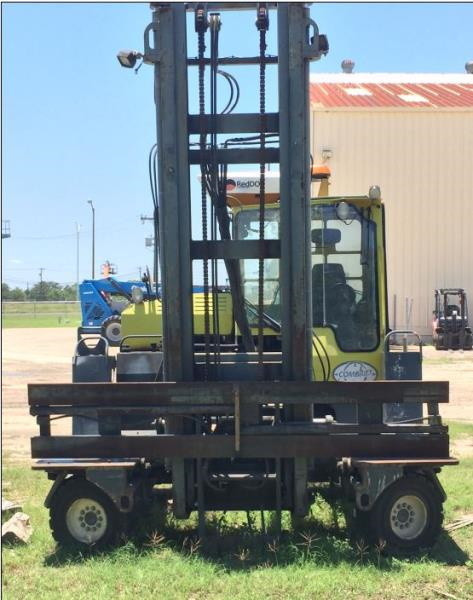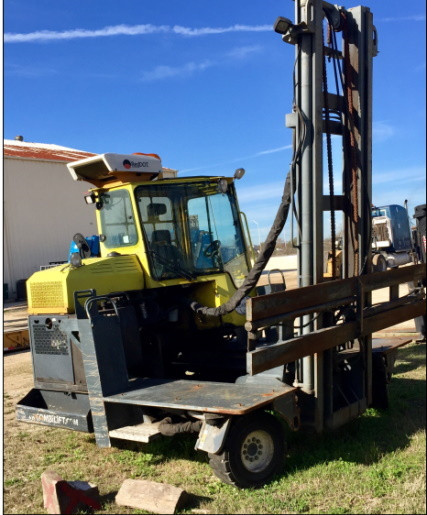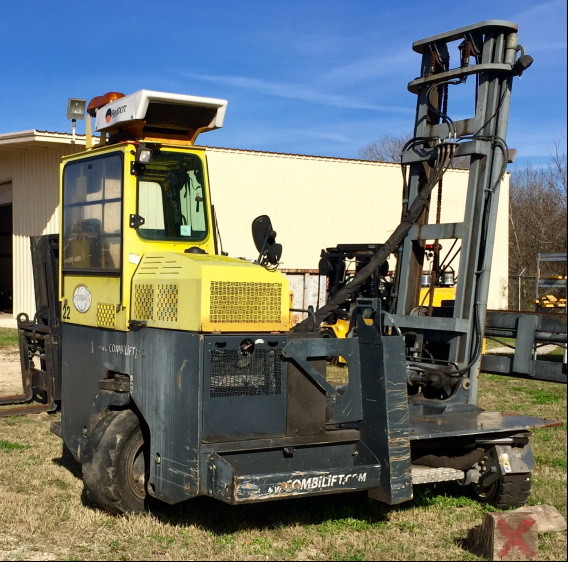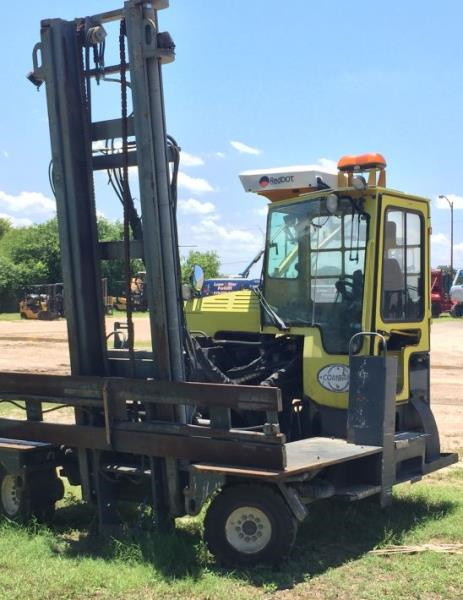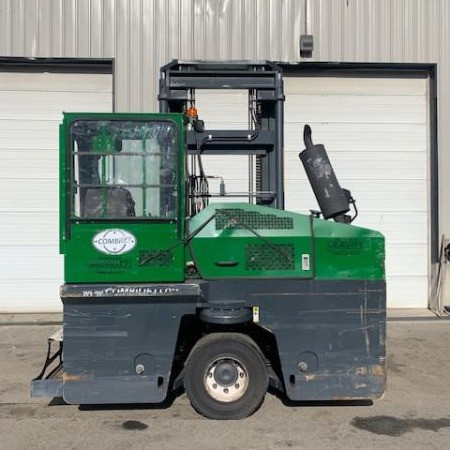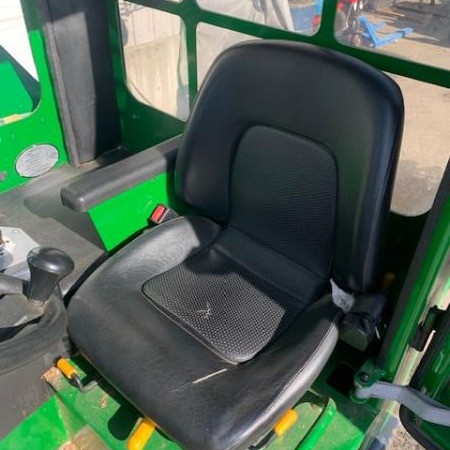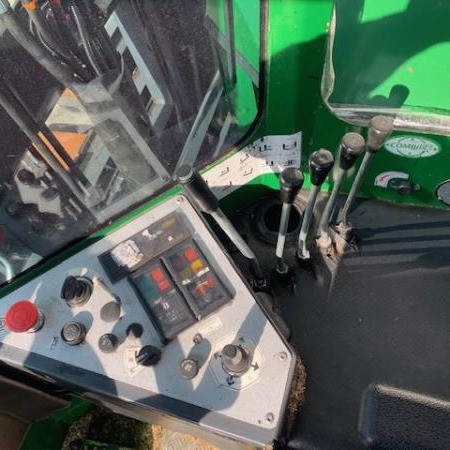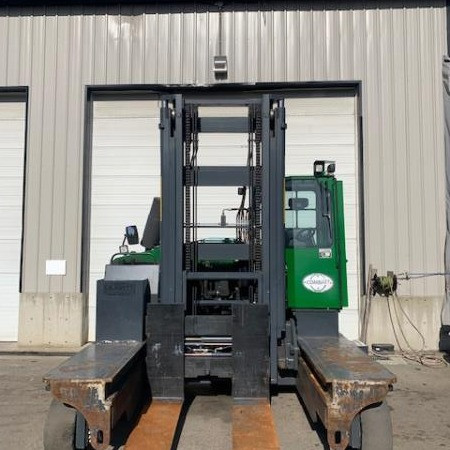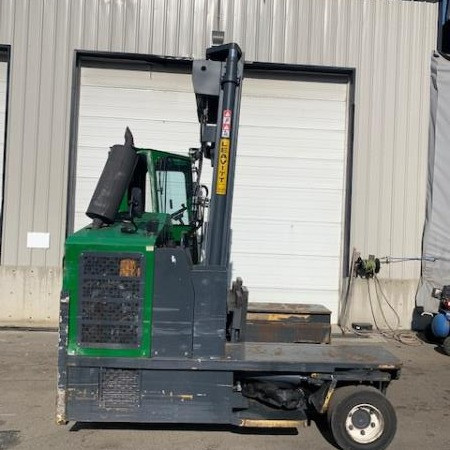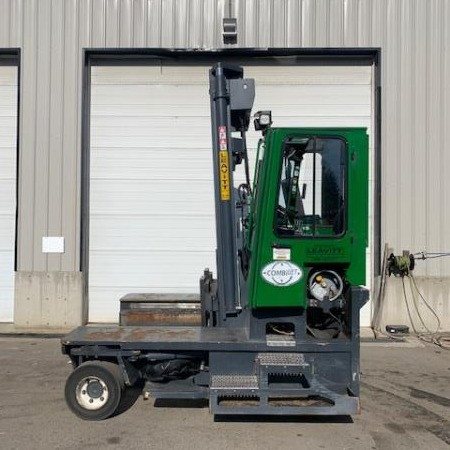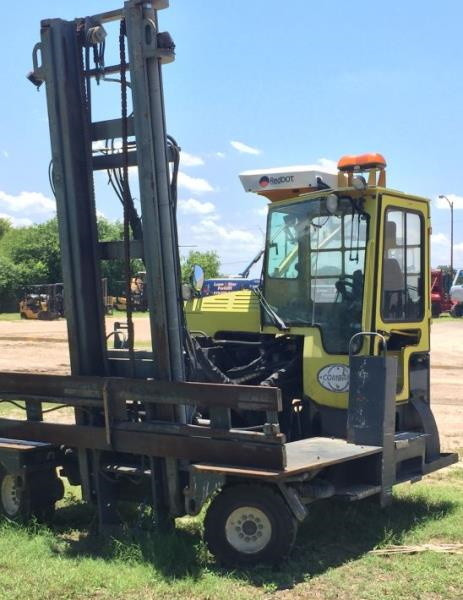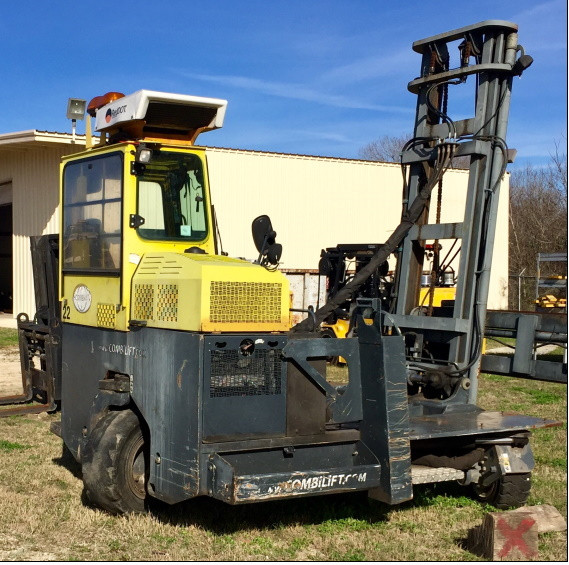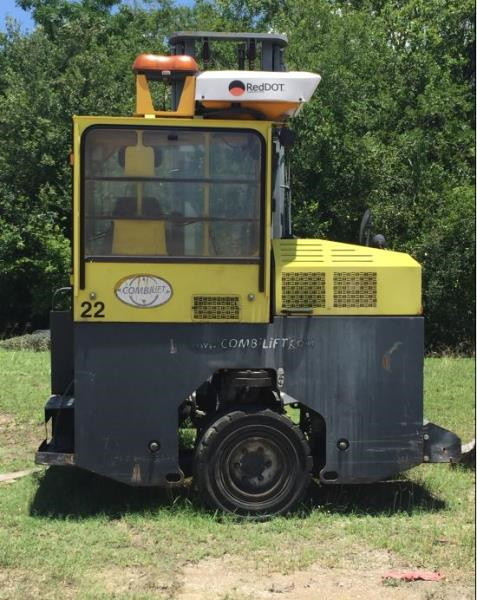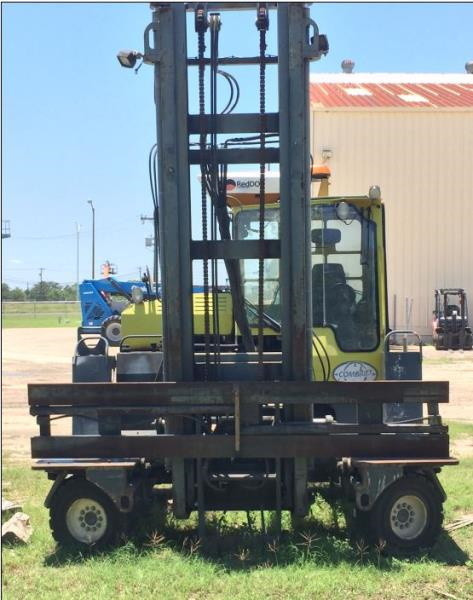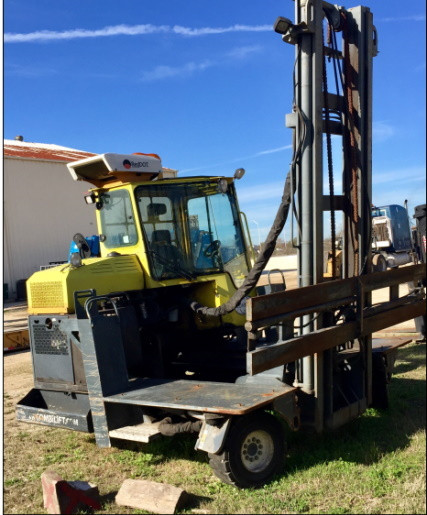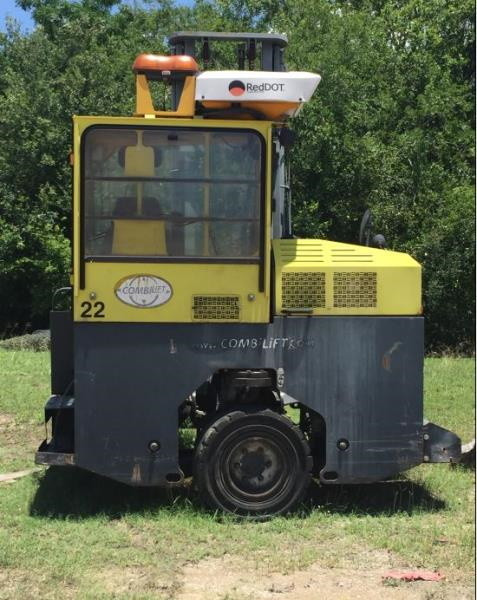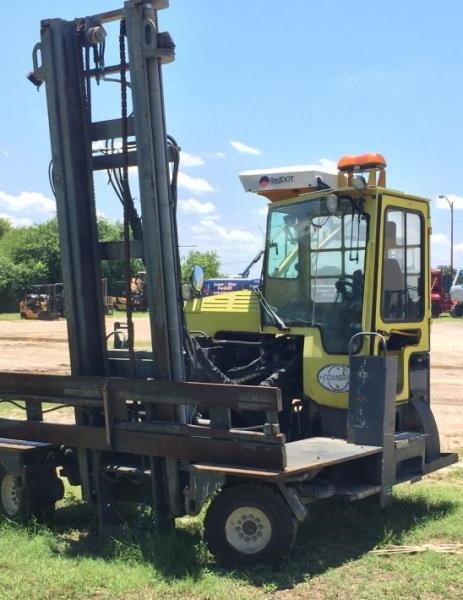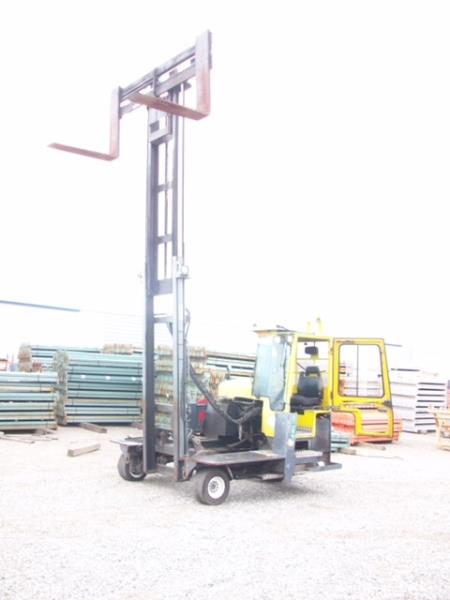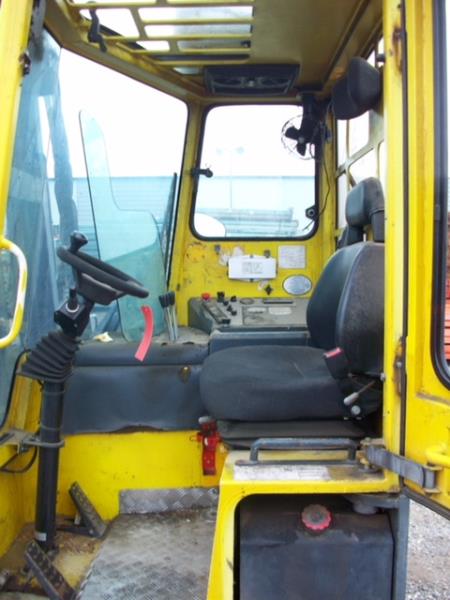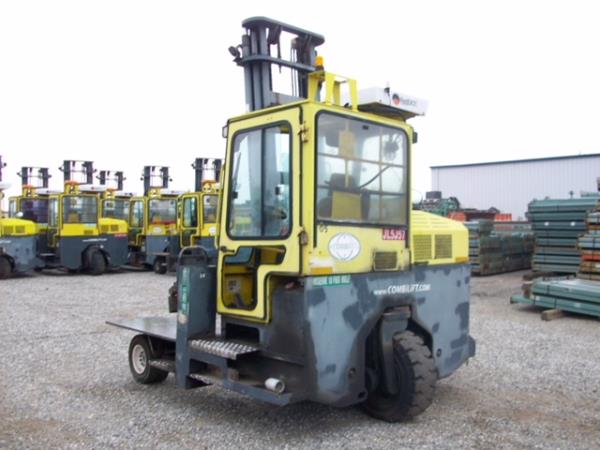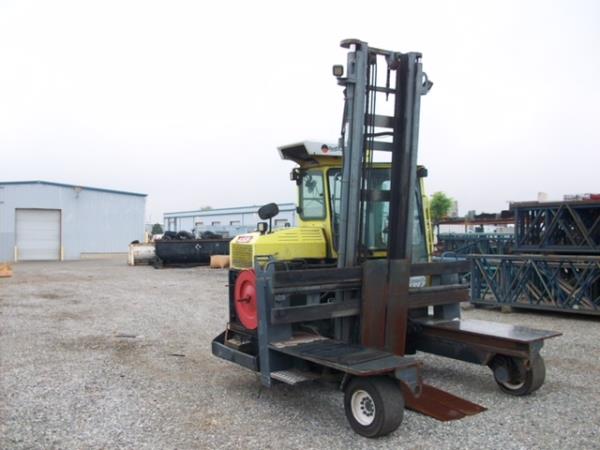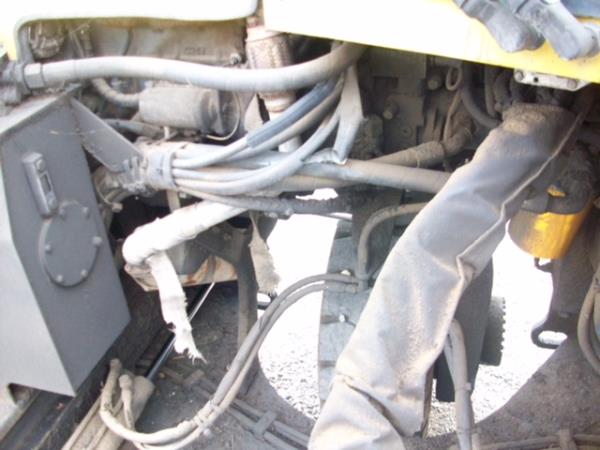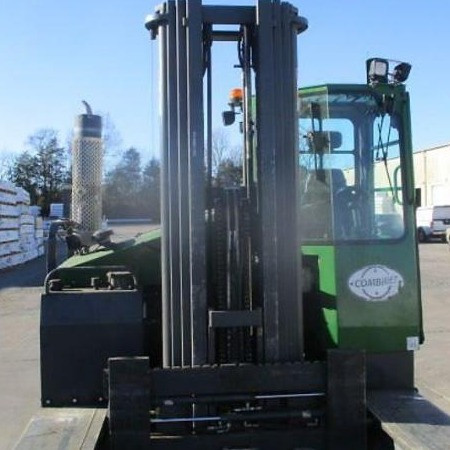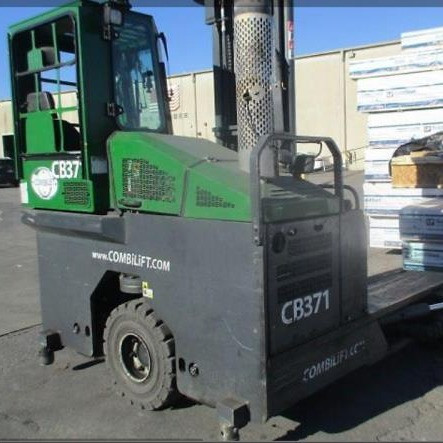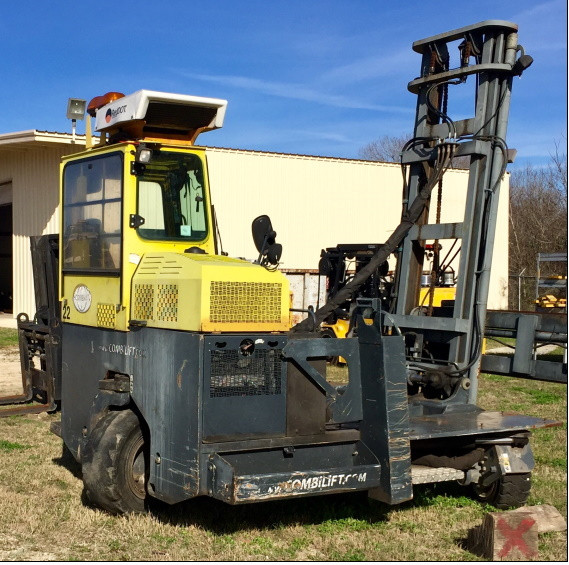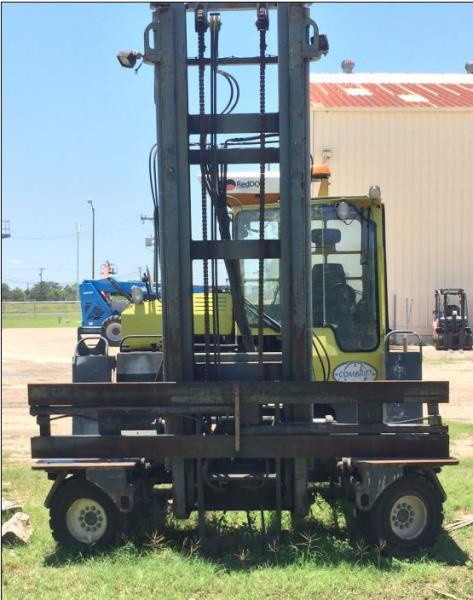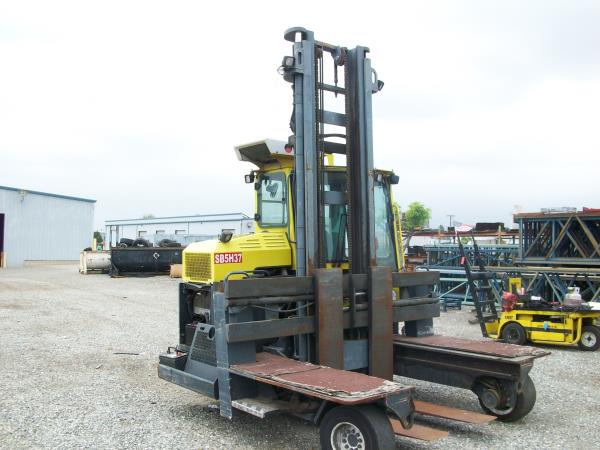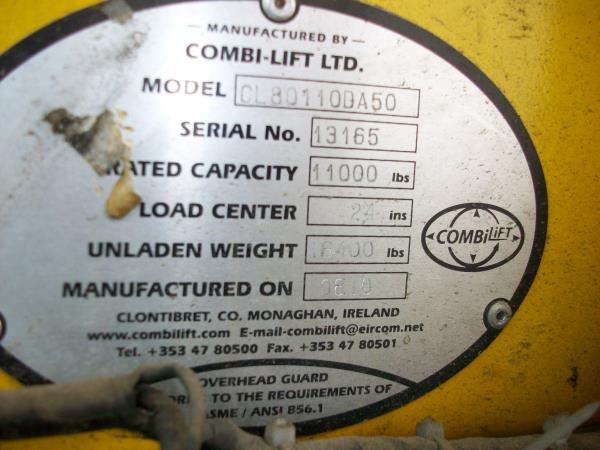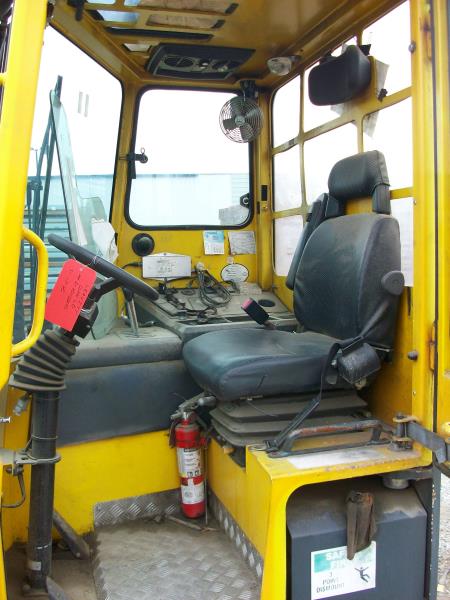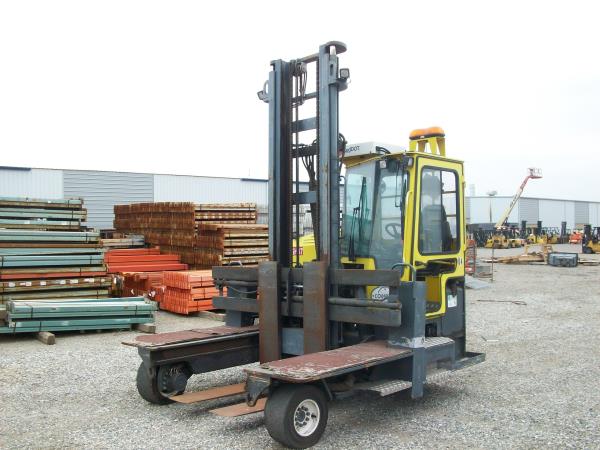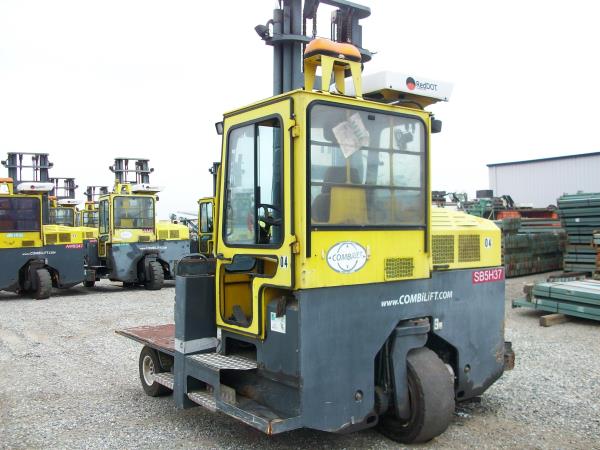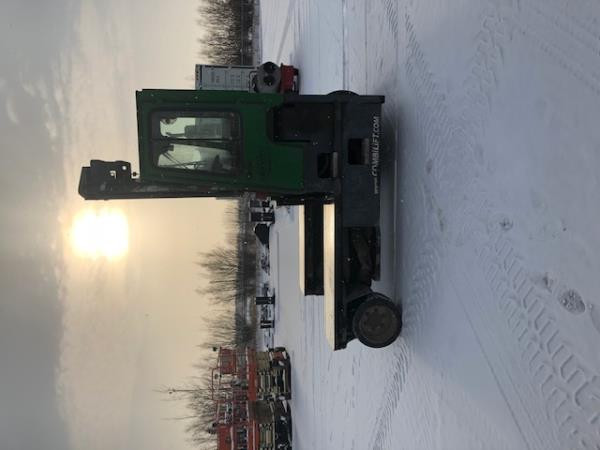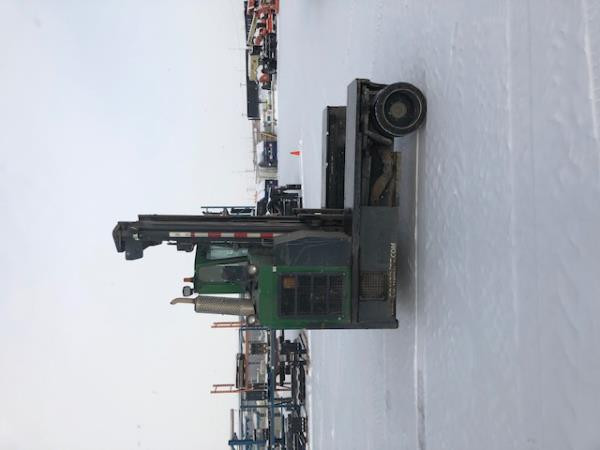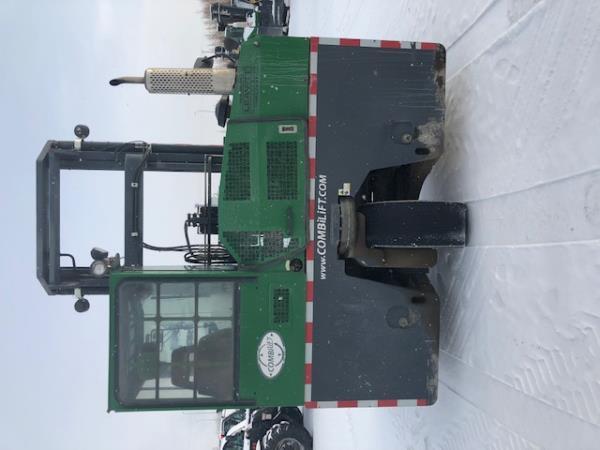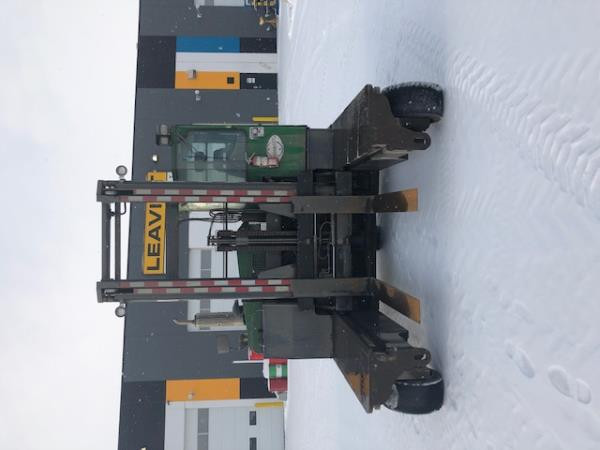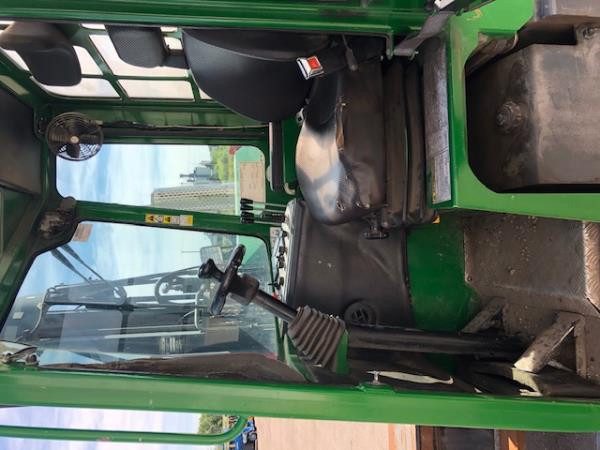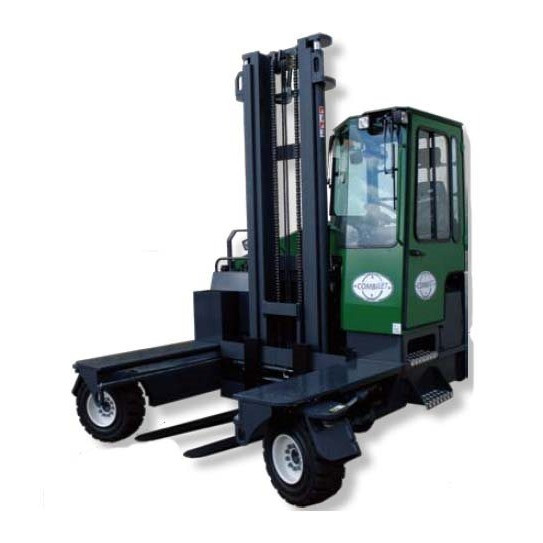Multi Directional Forklift Roseville
Used Side Loader Forklift Roseville - The side loader forklift is designed for lifting heavy cargo in narrow locations including loading docks, lumber yards and warehouse aisles. These forklifts are given their name by the way in which they load, and unload, material - from the side of the forklift rather than from the front, as with standard forklifts.
Benefits of Side Loader Forklifts v Standard Forklifts
It is common for forklifts that rely on the standard counterbalance design to potentially become unstable when unloading or loading heavy items. However, the side loader forklift is specially designed to handle these types of loads, such as long pipes and raw timber, providing much more stability. Having the load face the direction of travel ensures that timber and steel can be easier to maneuver. They also offer the advantage of providing the driver of the forklift with an unobstructed view, which is otherwise at least somewhat or greatly impeded by the tines and load carried at the front on a standard forklift.
Since the loads are transported along the side of the forklift instead of across the front, the side loader can travel easier through narrow aisles and doorways. The load may have to be lowered or raised to get past obstacles that can increase the chances of destabilizing and cause dangerous tip-overs. Side loaders eliminate the need for much of that maneuvering. This means warehouse operations can manage in much smaller spaces with fewer modifications while also operating in a safer manner.
Many models can lift up to 12K lbs. while traveling at speeds higher than 5 miles an hour. There may be the ability to have travel speeds programmed. This feature allows the operator to match speed to a specific application.
Types of Side Loader Forklifts
Class 2 - Electric Motor Narrow Aisle Trucks
The Class 2 Electric Motor Narrow Aisle Trucks are where the side loader forklifts are classified. This class captures the forklifts that operate in narrow aisles with electrically sourced power. Excellent for operating in loading docks and warehouses, these units rely on narrow aisle configuration and are moved between close quarters common for storing lumber, bar stock, laminate and carpet. They are also suited for rack storage and feeding machine tools. The narrow aisle units are popular in warehouses as they offer a sleek design that saves on storage. These units are efficient at loading and unloading. Class 2 side loaders take up less space compared to traditional forklift trucks. This allows increased efficiency and speed when moving, loading and unloading in narrow aisles. Dangerous internal combustion emissions are eliminated due to their electrical power use, making side loaders excellent for interior applications.
Internal Combustion Engine Side Loader Forklifts
The Class 2 forklifts only apply to side loaders that use electric power. Units that do not rely on electricity do not fall into this category. Side loaders are found in timber and lumber yards and pipe and steel yards for transporting long and heavy loads. They can move items from flatbed trucks, stack items in blocks or racking. Exterior side loaders need to work outside and on uneven surfaces. Internal combustion models are common. These units rely on pneumatic tires for better transportation. Side loaders are especially popular for these types of applications because the weight and length of materials being handled mean that the side loader forklift can maneuver between narrow stacks, piles or aisles to pick up the long load in their middle which is crucial for loading long items and safely transporting them.
Side Loader Forklift Design
The side loader forklift comes in two basic designs:
1. Stand on; and
2. Sit down.
Stand On Side Loader Forklifts
Used mostly indoors in applications such as warehouses, the stand on end control has a small platform area surrounded by the forklift’s controls, usually located in the middle of the truck, for the operator to stand. There are many advantages to the stand-on design. It creates a more compact machine and smaller cab design since there is no seat for the operator. This creates a forklift with a smaller footprint which is advantageous for traveling within confined locations. There is better visibility for the operator when working in a standing position, particularly while operating the machine backward. While standing, the operator can turn their body to see the back of the forklift truck while in reverse. In a sit-down machine, operators need to twist their neck and back to get a clear view. Stand-up models have comfort and safety. Better operator visibility lessens injuries and product damage. Operators can get onto and off of the stand up forklift faster compared to a sit-down model and this may increase efficiency in certain situations.
Sit Down Side Loader Forklifts
Of the two basic designs, the sit down side loader forklift is the most popular. Similar to the side loader stand, the sit-down unit features a centrally located cab. The difference that a sit down forklift has a raised platform with a seat facing the forklift’s control panel. The sit-down units boast better operator comfort. The machine enhances productivity and reduces fatigue when operators can work from a resting position.
Customizable Features
The side loader has customizable bed length options to be suitable for many jobs. Custom applications can be met on the job with a sixty-inch extension to further the reach of standard bed length side loaders. A side loader cannot be customized before bed length considerations are given to ensure that guide rails and aisle widths can accommodate.
These machines can function in a multidirectional manner. Crab steering on side loaders refers to having two wheels function independently from the other wheels. This feature allows the side loader to move in all four directions by changing the direction of the wheels, allowing the forklift to move sideways into narrow storage aisles without making large, swing-out turns or multiple adjustments. The smaller turning radius helps to avoid damage to items and the building while increasing safety. It also increases efficiency by lessening the time and space needed to maneuver around the job site.
Numerous side loader features can be customized to suit a job site. Lift mast heights, lights, mirrors, lift capacities and tine length and other features are all customizable.
Certain features are also adjustable, allowing for further customization of the side loader for the particular job application. Travel speed, acceleration time, load limits and breaking force can all be set allowing further job efficiency and increased workplace safety.
For all of the above reason, the side loader forklift has become the most popular option for workplaces where space is limited and long loads are involved.
Multi Directional Forklift PDF
Stock Number: EQU008107 GL
Make: Combilift
Model: C12000
Year: 2008
| Stock Number |
EQU008107 GL |
| Make |
Combilift |
| Model |
C12000 |
| Year |
2008 |
| Category |
Side Loader |
Stock Number: 208235 GL
Make: COMBILIFT
Model: C17300
Year: 2014
| Stock Number |
208235 GL |
| Make |
COMBILIFT |
| Model |
C17300 |
| Year |
2014 |
| Category |
Side Loader Forklift |
Stock Number: EQU008136 GL
Make: Combilift
Model: C12000
Year: 2008
| Stock Number |
EQU008136 GL |
| Make |
Combilift |
| Model |
C12000 |
| Year |
2008 |
| Category |
Side Loader Forklift |
Stock Number: EQU008115 GL
Make: Combilift
Model: C12000
Year: 2008
| Stock Number |
EQU008115 GL |
| Make |
Combilift |
| Model |
C12000 |
| Year |
2008 |
| Category |
Side Loader Forklift |
Stock Number: EQU008127 GL
Make: Combilift
Model: CL80110DA50
Year: 2008
| Stock Number |
EQU008127 GL |
| Make |
Combilift |
| Model |
CL80110DA50 |
| Year |
2008 |
| Category |
Side Loader |
Stock Number: EQU020234 GL
Make: COMBILIFT
Model: C8000
Year: 2015
| Stock Number |
EQU020234 GL |
| Make |
COMBILIFT |
| Model |
C8000 |
| Year |
2015 |
| Category |
Side Loader Forklift |
Stock Number: EQU008139 GL
Make: Combilift
Model: C12000
Year: 2008
| Stock Number |
EQU008139 GL |
| Make |
Combilift |
| Model |
C12000 |
| Year |
2008 |
| Category |
Side Loader |
Stock Number: EQU008120 GL
Make: Combilift
Model: CL80110DA50
Year: 2008
| Stock Number |
EQU008120 GL |
| Make |
Combilift |
| Model |
CL80110DA50 |
| Year |
2008 |
| Category |
Side Loader |
Stock Number: 206080 GL
Make: COMBILIFT
Model: C20000
Year: 2011
| Stock Number |
206080 GL |
| Make |
COMBILIFT |
| Model |
C20000 |
| Year |
2011 |
| Category |
Side Loader Forklift |
Stock Number: EQC015972 GL
Make: Combilift
Model: CB6000
Year: 2018
| Stock Number |
EQC015972 GL |
| Make |
Combilift |
| Model |
CB6000 |
| Year |
2018 |
| Category |
Side Loader Forklift |
Stock Number: EQU008128 GL
Make: Combilift
Model: CL80110DA50
Year: 2008
| Stock Number |
EQU008128 GL |
| Make |
Combilift |
| Model |
CL80110DA50 |
| Year |
2008 |
| Category |
Side Loader |
Stock Number: EQC004281 GL
Make: Combilift
Model: C10000XL
Year: 2017
| Stock Number |
EQC004281 GL |
| Make |
Combilift |
| Model |
C10000XL |
| Year |
2017 |
| Category |
Side Loader Forklift |
Stock Number: EQC007681 GL
Make: Combilift
Model: C10000XL
Year: 2017
| Stock Number |
EQC007681 GL |
| Make |
Combilift |
| Model |
C10000XL |
| Year |
2017 |
| Category |
Side Loader Forklift |


